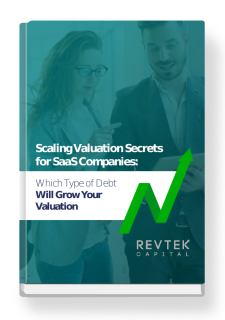COGS for SaaS: What to include? The cost of operating a SaaS business can be complicated to calculate. There are so many variables for classifying expenses, which you know if you’ve run a business before or know someone who does. We believe that keeping your finances in order is one of the most crucial aspects of launching and maintaining successful software companies.
It is vital to get finance tracking right from the beginning for your Software as a Service company and keep cost organization consistent. This is not only important for running an organized operation, but also because numbers matter when trying to expand, sell, or obtain financial backing.
To get it right, it is essential to understand the different types of expenses and how you should allocate them for COGS.
What is COGS?
The Cost of Goods Sold (COGS) is the category for enumerating all expenses related to delivering your product or service.
Unfortunately, there is no Generally Accepted Accounting Principle (GAAP) for calculating COGS in SaaS or subscription-based businesses. Every company calculates its number a little bit differently.
The process can be complicated, but you must choose carefully what expenses to include because this calculation affects your company’s gross profit margins. To help you decide for your own SaaS company, here’s a little breakdown of what you should or should not include in COGS.
What’s the Difference Between COGS and OPEX?
The most crucial differentiation to make when deciding where to allocate expenses for accounting is keeping COGS separated from Operating Expenses.
With traditional businesses that offer a physical product, this process is a little more cut and dry. But for SaaS business models, there is a bit more overlap between the two. You must decide for your particular business where some expenses go.
Generally, COGS includes expenses related directly to offering the product or service, but it does not include all the expenses it takes to run the business. For instance, costs incurred for keeping the business afloat, such as rental space, commission, and overhead salaries, are not typically included in COGS.
To calculate COGS, the rule of thumb to follow is if you could still deliver the service without the cost, do not include it in COGS.
Categories to Include in COGS for SaaS
There are two main categories that most COGS fall under in SaaS. Any expense that relates directly to delivering your service should fit into one of these two: Hosting and Professional Services.
Hosting
Hosting expenses encompass all costs related to running and delivering your specific service online. Things to be included are hosting website costs, third-party software, research and development, and more. If there is a cost related to your service’s software, data, and access, then it is included in COGS.
This is different from traditional businesses, whose COGS calculations are mainly filled with the cost of developing and creating a physical product. Therefore, their numbers may be a little more evident as to what to include.
But for SaaS, if your users could not access or use your product without that expense, include it.
Personnel Services
This category differs the most from traditional businesses because they typically calculate salaries as operating expenses, not costs of goods sold. But for SaaS, personnel services are related directly to user experience. You’ll want to include some salaries, training, and travel expenses with COGS, depending on your employees’ roles.
To determine which personnel expenses qualify as professional service, you must decide if they relate directly to your product or deliver the service. For instance, management and overhead employees are essential to running the business but may have no direct contact or impact on your users. SaaS businesses would not add these salaries and expenses in their COGS as a result.
Professional Services Example
Personnel that deal directly with user experience or delivering your product to your users are included. Examples of this include customer support and technical support teams and development and engineering teams. If your service could not run well without that role, then the expenses for that role are included in COGS.
One confusing category for SaaS is when it comes to sales teams. For instance, those who deal with customer acquisition and retention are vital to delivering your service and are usually included in COGS. However, sales members who deal only with upselling are not critical to the service itself and are typically not included.
COGS and Financing
As mentioned above, calculating COGS is not a straightforward process for SaaS businesses because there are many variable costs and factors that differ from traditional companies. For business owners, it may be tempting to stay hands-off and let accounting deal with these calculations, but it is always wise to stay invested and updated with every aspect of your business structure.
COGS is significant because it determines your gross margin, which affects the profit and marketability of your business when looking to finance, upgrade, or sell your company.
At RevTek Capital, we know about financing SaaS businesses to get you to that next level. If your business is profitable, but you need a boost and assistance to upgrade and organize, our qualified team can help. Connect with our team with your financial and COGS questions.



